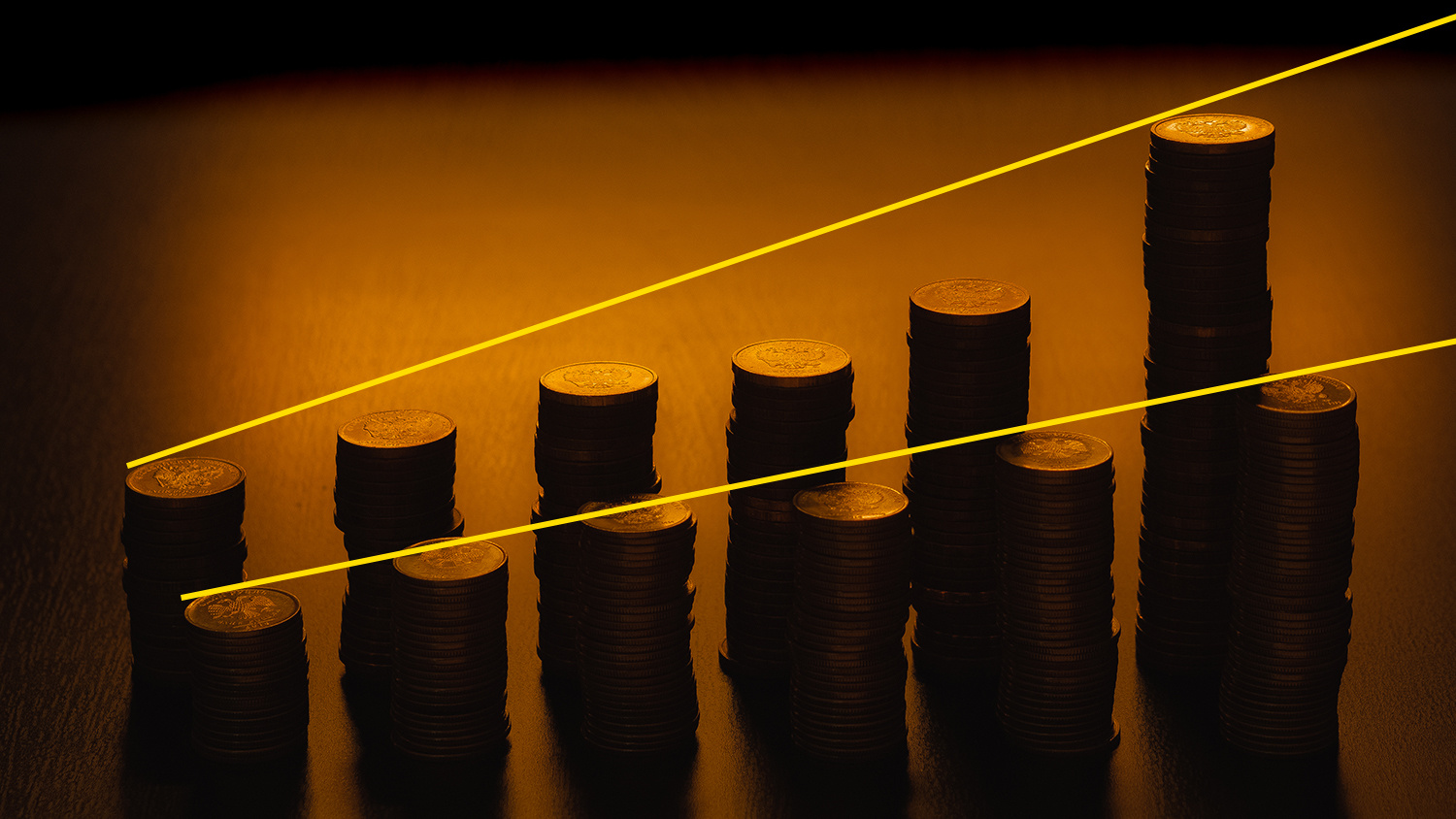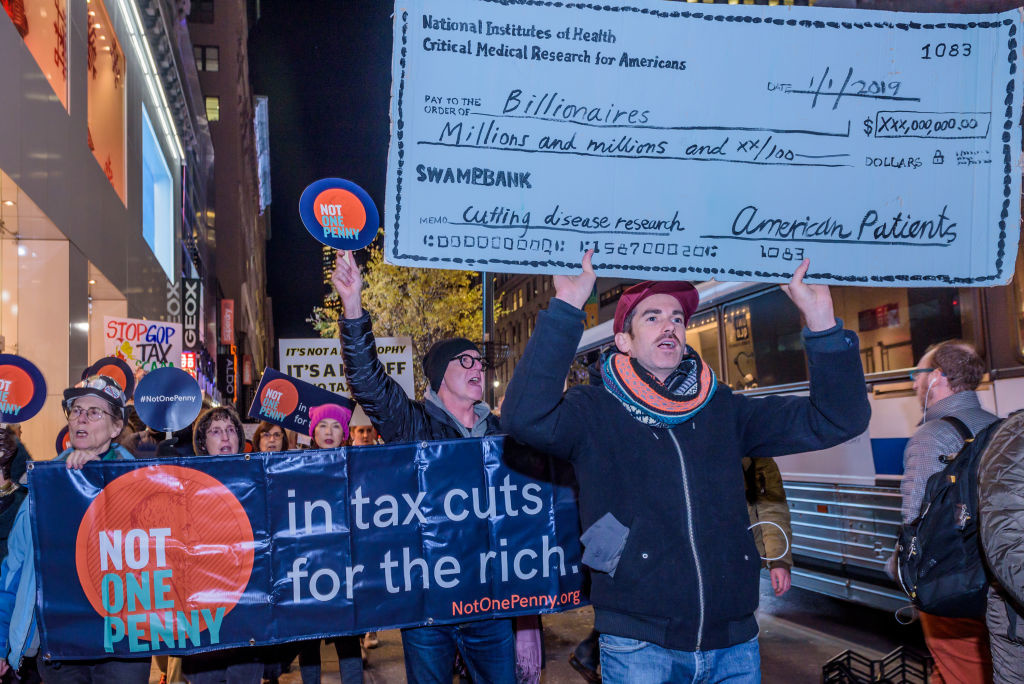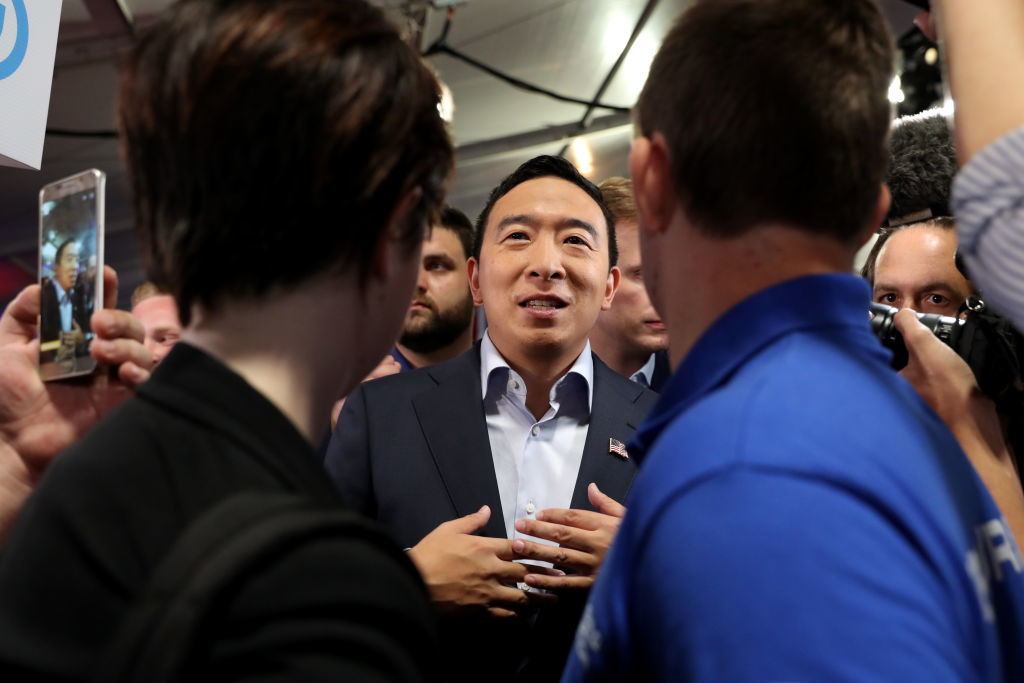Andrew Yang: Alaska proves a universal basic income can work

- The Alaska Permanent Fund directs oil revenue into a fund that pays Alaskans a yearly dividend, usually between $1,000 and $2,000.
- Andrew Yang points to this and other experiments to support the efficacy of a universal basic income.
- However, Alaska’s model leaves several important questions unanswered.
What does Andrew Yang have in common with Thomas Paine, Richard Nixon, Martin Luther King Jr., Charles Murray, Carole Pateman, and Elon Musk? They all have advocated for a universal basic income (UBI).
Yang calls his UBI proposal the Freedom Dividend. In his book The War on Normal People, he explains his reason for the moniker: “It’s analogous to a company giving dividends or money to its shareholders. No one regards that as a waste of money, because the shareholders theoretically are the owners of the company. Are we not, as the citizens of the United States, the owners of this country?”
This Freedom Dividend would provide every American adult $1,000 a month, no strings attached. But an impediment Yang and other UBI defenders have always come against is a lack of data. No country has ever implemented a UBI policy to scale.
To meet this challenge, in interview after interview Yang points to Alaska to support UBI’s efficacy. You read that right: A Democratic candidate for president is lauding the deep red state of Alaska as proof that a government spending program can work. Come again?
Looking toward Alaska
First, a bit of history. Alaska established the Alaska Permanent Fund in 1976, after a general election amended the state’s constitution to allow for dedicated funds. The article commissioned the legislature to set aside a percent of oil and mineral revenues into a general fund. The Fund is managed like an investment fund and pays dividends to Alaskan citizens. Today, its value exceeds $60 billion.
Payouts began in 1982, and since the mid ’90s, Alaskans — including children but excluding criminals — have regularly received dividends between $1,000 and $2,000 a year.
While the Alaska Permanent Fund isn’t technically universal income, it is the largest, longest running distribution of such money to citizens. For this reason, economists, politicians, and researchers look to the state as a source of data for how a UBI could potentially affect economic wellbeing.
According to Mouhcine Guettabi, a researcher at the University of Alaska’s Institute of Social and Economic Research, the data shows payouts are beneficial overall, but not miraculous godsends.
For every additional $1,000, women work an hour less and men’s work increases by roughly 1.8 percent. Likely, this difference stems from mothers choosing to work less and spend time with families. As Guettabi clarifies, more men work in Alaska, so that uptick amounts to about 2,000 additional jobs in the three months after distribution. That’s at a cost of about $600 million to the state.
Looking to children, every additional $1,000 reduces the likelihood of obesity by 4.5 percent. Statewide, that equals about 500 cases of obesity potentially alleviated.
Property crimes decrease by 8 percent; meanwhile, substance-related crimes increase by about 10 percent. However, these figures do not mean Alaska is a state filled with druggies sporting a strong sense of personal space. These divergences apply only to the first weeks after payout. Since distribution is annual, not monthly, this means the payouts have a marginal effect on crime.
Dipping our toes in the UBI pool
Other experiments have supported some of the data coming from Alaska.
From 1968 to 1971, the New Jersey Graduated Work Incentive Experiment offered cash payments to families. The experiment was designed to look at the impacts a negative income tax would have on people living below the poverty line. It showed no major withdraw from the work force and no effect on health or perceived life quality. However, families were more likely to upgrade their living conditions and enhance their economic well-being.
Moving to Europe, Finland recently concluded an experiment in universal basic income. Kela, the Finnish government’s unemployment agency, gave 2,000 people a tax-exempt income of 560 euros a month for two years. The study found the income distributions didn’t affect employment attainment or work hours. It did, however, elevate people’s perception of their wellbeing and reduced their stress.
“Our results weren’t that surprising as it kind of confirms what we know from other pilots,” Minna Ylikännö, a lead Kela researcher, told Wired. “People’s wellbeing is enhanced when they have some kind of financial security. They feel secure, so they feel better – that’s something which we see in other countries too, not just a Finnish experience.”
However, these experiments are limited in what they can tell us about UBI. Both were short-term, narrowly focused, and had small sample sizes. They only offered money to specific groups — those below the poverty line and the unemployed, respectively — not to a randomly selected group of citizens. As such, the Alaska Permanent Fund offers a much deeper history from which to draw preliminary inferences on UBI’s efficacy.
The Big Yang theory
Data from Alaska and other small-term experiments suggests that many concerns over universal basic income are overblown. A UBI likely won’t discourage citizens from working. It won’t lead people to fund a lifestyle of decadence and depravity off the backs of hardworking taxpayers. And it’s certainly not socialism.
With that said, Alaska’s example can’t help us answer many of the lingering questions surrounding a nationwide UBI. Foremost, whether we can afford it.
The Alaska Permanent Fund pays out once a year, and the amount fluctuates based on, for example, stock market performance and whether the legislature diverts funds to other projects or investments. Conversely, the annual $12,000 advocated by Yang and other UBI proponents is significantly higher and will not be allowed to fluctuate to match market pressures (whether it adjusts to offset inflation depends on how it is established).
Cost estimates of a nationwide UBI vary, but hedge-fund manager Ray Dalio calculated the cost to be more than $3 trillion annually. The Center on Budget and Policy Priorities calculated a similar amount. For reference, theCongressional Budget Office estimates federal revenues for 2019 to be $3.5 trillion.
Yang’s solution is to consolidate current welfare programs and then implement a 10 percent value-added tax (VAT). This new tax would specifically target business titans such as Amazon, which in 2018 paid effectively no taxes on $11 billion of profits. As Yang told George Stephanopoulos on This Week:
What we have to do is, we have to join every other advanced economy and have a value-added tax that would fall on the Amazons of the world, and because our economy is now so vast at $20 trillion, up $5 trillion in the last 12 years, a value-added tax at even half the European level would generate over $800 billion in new revenue.
The second major concern: offering money to every citizen helps the rich as much as the poor. Effectively, wealth inequality persists. Yang’s response, we need to give everyone the UBI to make it stick and then use the VAT to ensure the poor become better off.
As described on Yang’s campaign website: “By giving everyone UBI, the stigma for accepting cash transfers from the government disappears. Additionally, it removes the incentive for anyone to remain within certain income brackets to receive benefits. If it’s paid for by a value-added tax as in my plan, a wealthy person will likely pay more into the system than he or she gets out of it.”
Others disagree. An analysis from the Tax Policy Center argues that a VAT has the potential to reduce household income by either raising the prices of goods at market or reducing the business revenue available to workers. Additionally, a VAT won’t tax the returns on capital investments, which make up a large portion of income for upper-class households but little-to-none for low-income ones. The Center concludes that a VAT would ultimately be regressive unless introduced alongside a sweep of policy changes.
The final concern we’ll consider is that a UBI diverts funds from programs with a proven track record of success. This is why Yang’s proposes an opt-in program. Under his plan, those who prefer existing welfare programs can stick with them. Furthermore, people who draw more than $1,000 of assistance these programs will still receive the difference should they opt in.
Ultimately, any dollar that goes into a UBI program is a dollar that can’t be spent elsewhere. Would providing everybody a $1,000 a month help uplift children in impoverished families more than, say, universal preschool and lunch programs? Is it better to offer people $1,000 per month to assist paying for healthcare or to enshrine health as a universal right?
Yang correctly points to Alaska to support his Freedom Dividend, as data from the state can help us begin the conversation. However, it can’t help us answer the fundamental questions mentioned above. For those, we’ll need to debate the topic with honesty, good data, and solid arithmetic. This conversation may take a while yet.





